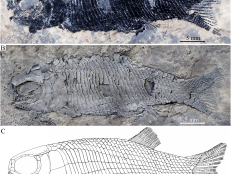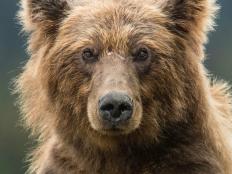All Science Articles
Showing 61 - 75 of 341 results
Tree Planting and Reforestation Will Help Limit Global Warming
Planting new trees is one of the most effective ways to reduce atmospheric carbon dioxide (CO2) and limit global warming.
Coffee Culture Brews Up Eco-Friendly Espresso in the Lab
Coffee is one of the world’s favorite beverages: a pick-me-up social brew that regular drinkers in the US consume more than three times a day. But the coffee bean itself is under threat from climate change. Now a Finnish research group has cultured beans in the lab to offer the world a sustainable espresso.
Cutting Methane is Quickest Way to Limit Global Warming Before 2030
President Joe Biden has announced plans to tackle climate change by reducing emissions of the greenhouse gas methane by at least 30% by 2030. His pledge, agreed with the European Union, aims to raise ambitions for world leaders to combat global warming ahead of the critical COP26 climate summit in November.
Dolphin Doctors Appointments: The Future of 3D Scanning Marine Mammals
Drones, satellite tracking, and underwater acoustic devices have made a huge difference in understanding more about the lives of whales and dolphins. Now researchers are turning to 3D laser scanning to get more accurate data about their size, shape, and general health.
Microplastic Pollution Stirs Urgent Worldwide Clean-Up
Microplastics are a toxic timebomb that could plague the planet for centuries if not tackled urgently.
London’s River Thames Has Risen From the Dead
Now teeming with life, this once ‘biologically dead’ river is home to sharks, porpoises, and seals.
244 Million-Year-Old Fossils Discovered in China
These are the oldest fossils of the extinct bony fish, Peltoperleidus, ever to be found, and the first time Peltoperleidus fossils have been found outside of Europe.
Can Birds Warn Us About Natural Disasters?
Researchers think birds can hear hurricanes and tsunamis coming. Scientists are hoping to capitalize on that sixth sense to develop an early detection system to save lives.
Sound of the Year: Awards Created to Recognize Chimes of History
From voices raised in protest for change to the final tender words uttered to a dying loved one, sound and hearing are primal in connecting humans to the world. Now those moments are being acknowledged in an annual award for the Sound of the Year, created to honor audible history and the art of noise.
Global Meltdown: Scientists Race to Gather Crucial Climate Data from Glaciers
Glaciers store a vast amount of important climate data within their frozen rivers of snow and ice. But many of the world’’s 220,000 glaciers are under threat from global warming and are melting at an accelerating rate. Now scientists are in a race to gather long-frozen records of Earth’s past climate from the ice.
William Shatner is going where no 90-year-old has gone before
The Star Trek star will become the oldest person to go to space when he launches aboard a Blue Origin rocket on Wednesday, October 13. Watch live coverage on Space Launch LIVE: Shatner in Space on Discovery and Science Channel starting at 8:30A ET with liftoff scheduled for 10A ET.
23,000-Year-Old Human Footprints Discovered in America
Ancient human footprints found in New Mexico suggest people may have arrived in the Americas 10,000 years before scientists had previously thought.
A 400-Year-Old Coral Offers Hope for the Great Barrier Reef
An incredibly resilient species of coral has weathered hundreds of years of coral bleaching and survived. What can this teach scientists about conservation?
Facial Recognition for Grizzly Bears
New A.I. technology is allowing scientists to keep track of individual grizzlies over their lifetimes.
Disaster Zone Technology Gives Rescue Missions the Edge
Disaster zones operate on tight timelines. Minutes, or even seconds, can be the difference between life and death when people are trapped by rubble, collapsed buildings, or rising waters.























